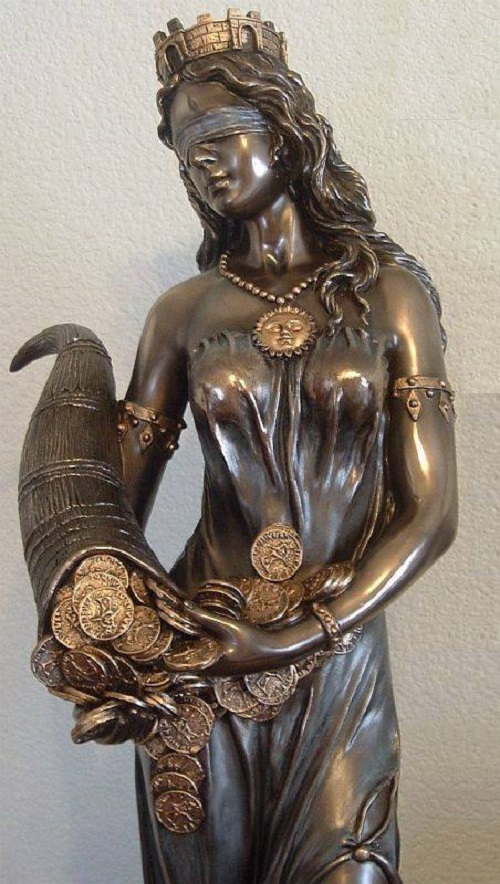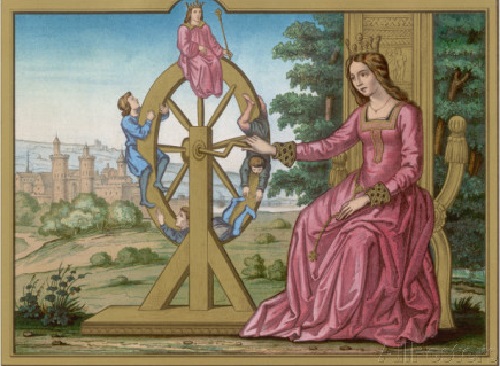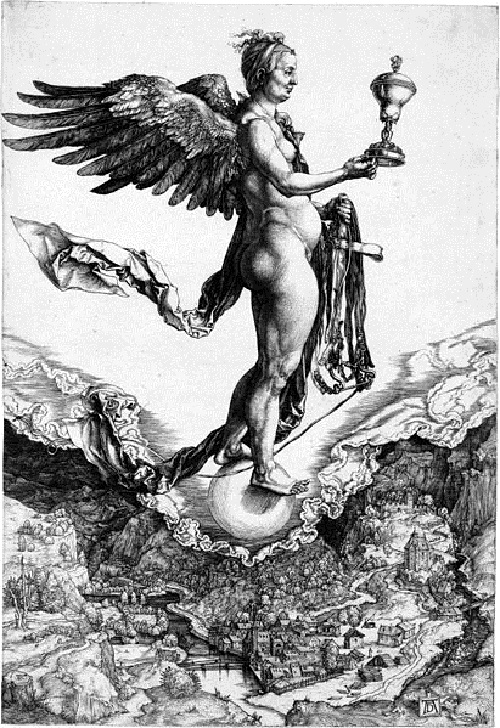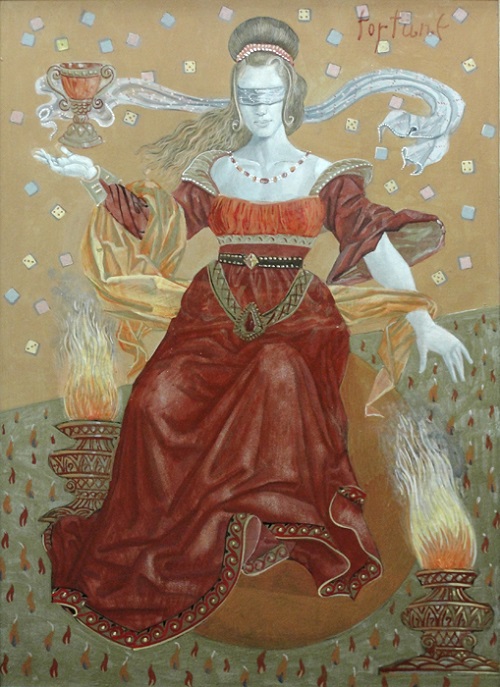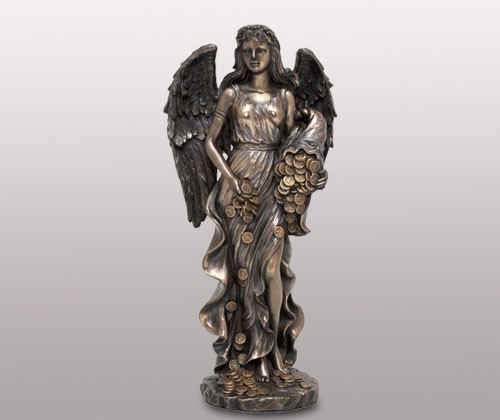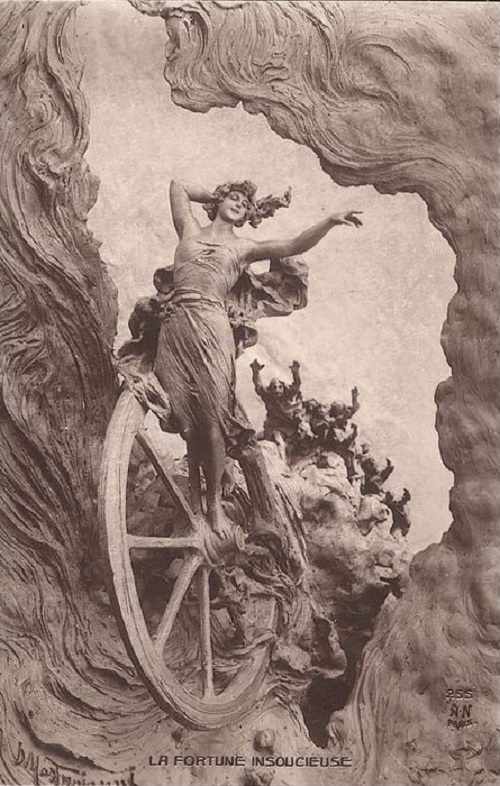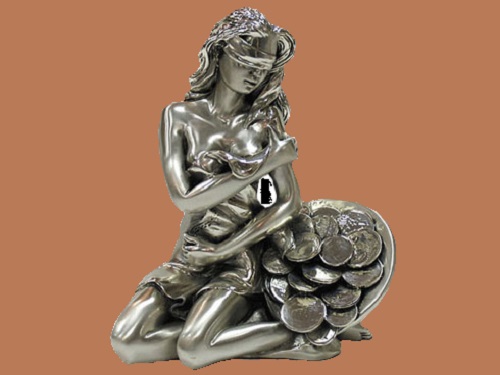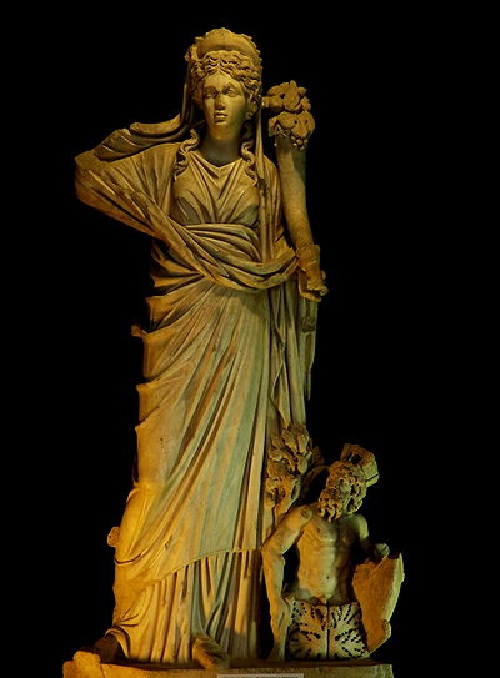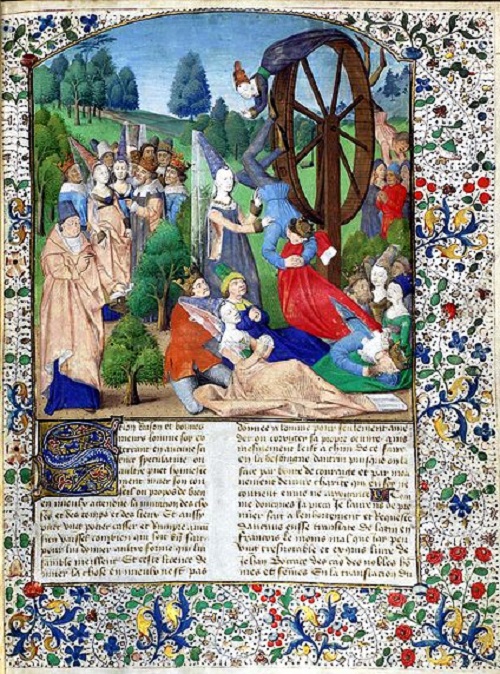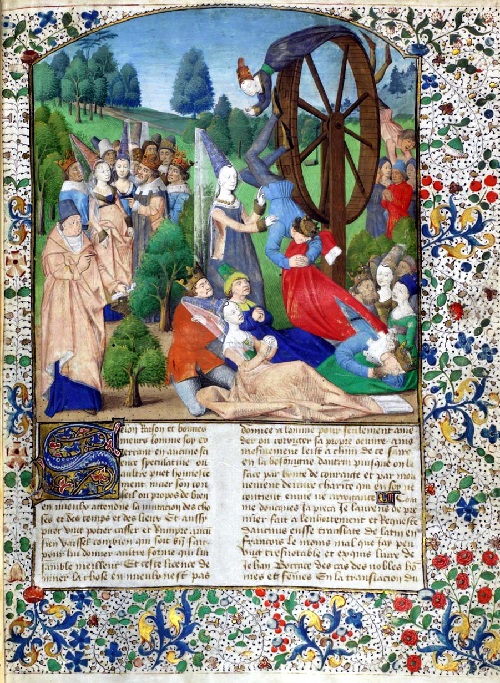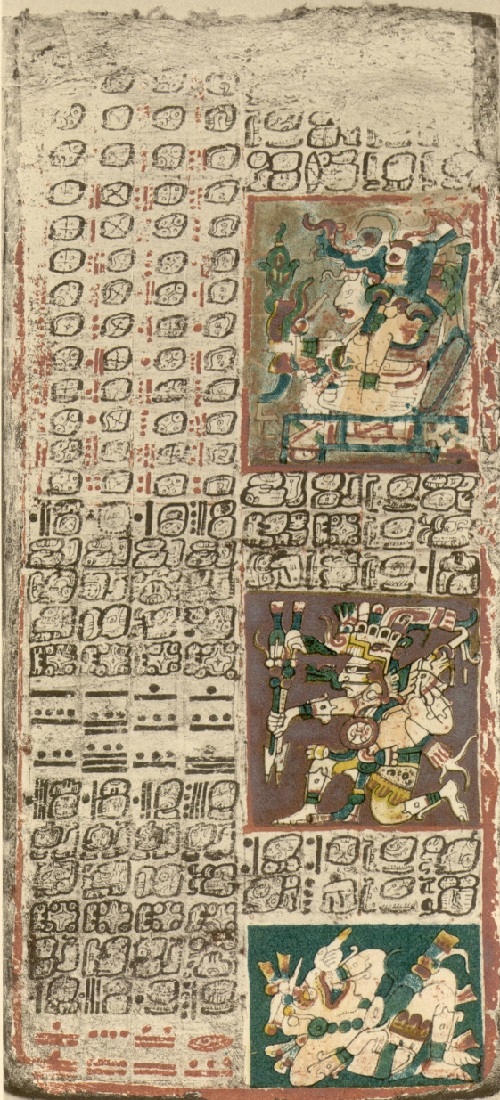Roman Goddess of luck Fortuna
Roman Goddess of luck Fortuna is the oldest Cult of Italic origin (di novensidenses), she is considered Goddess of chance, luck and fate. The oldest original meaning of the goddess Fortuna is difficult to determine. Its ancient temples were Fortis Fortunae and Aedes Fortunae, on the Forum Boarium. Judging by the nature of the holiday Fortis Fortunae and its time (June 24), the original meaning of the goddess was agricultural – deification of the accident, an unforeseen combination of circumstances that play such an important role in the life of the farmer.
Her close relationship and proximity to Mater Matuta suggest that as Matuta, she was a goddess patroness of women. At the same points it was mixed with Pudicita, and the custom of brides – to bring to Fortuna a virginals gift – their girlish dresses.
To the same goddess was dedicated another temple on via Latina, founded, according to tradition, by Coriolanus, where the goddess was worshiped under the name Fortuna muliebris. The same attitude towards women is evident in the cult of Fortuna virilis. To her prayed on April 1 women of the lower classes in the men’s baths; the festival coincided with the holiday in honor of Venus. Therefore, along with the patron goddess of purity and chastity goddess patronizes the opposite qualities of the female nature.
Fortuna cult was probably borrowed from Latium, anciently famous for its temples. Especially famous was Primigenia goddess, ie first-born daughter of Jupiter. This idea of an alien to Latin religion is, probably the result of foreign maybe Greek influence.
As a patron goddess of women and their fertility she was dedicated inscriptions from matrons, begging for children. And in the image of the goddess with two babies at the breast was similar to goddess in Capua and a number of others, especially the Gallic and Germanic deities. Hallmark of Praeneste cult were predictions that gave the goddess, which were written on oak rods. The cult of the goddess Fortuna Primigenia of Praeneste later penetrated Rome.
The first temple dedicated to Fortuna Primigenia was in 194 AD BC. on on the Quirinalis; Soon immediately arose another temple of the same goddess and temple Fortuna Publica Populi Romani (the Official Good Luck of the Roman People). Publica Romani was an epithet of goddesses, and two other temples joined the cult of patron goddess of fortune of the Roman people.
Cult goddess of fortune soon differentiated into hundreds and thousands of individual cults. Patron gods of certain individuals, groups, institutions, days, seasons, etc., thousands of Roman genius and personifications of the general concept of shared happiness and good luck for thousands of small parts.
She was devoted thousands of altars and chapels across the Roman Empire; her image is available in any home sanctuary, appears on coins and more often on the subjects of industry and household items. She dominates along with Mercury – the same god of material gain and fortune – on the carved stones, stamps on the lead of the various applications, the lamps, piggy, vessels daily use, etc.
Popularity promotes goddess so that it was included as an official component in the cult of the emperors under the name Fortuna Augusta – the fortune of the emperor, along with the genius of August. Pompeii and other places worshiped her. Cult of Fortuna retains its official value and after August to late imperial times.
Fortuna is usually portrayed as dressed woman resting one hand on the steering wheel and in the other holding a cornucopia. Sometimes she is represented standing on a ball or limited to it her main attribute – steering wheel. Differentiation is characterized by the addition of attributes, for example the ship’s nose (Fortuna navalis). Fortuna adapts a variety of personifications, standing with her in more or less close connection: Felicitas, Hilaritas, Concordia, Fides et al adjacent to her.
Roman Goddess of luck Fortuna
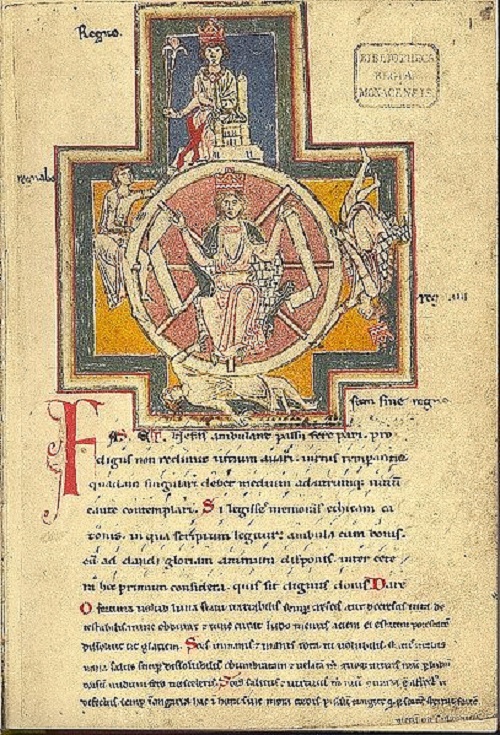
Fortuna governs the circle of the four stages of life, the Wheel of Fortune, in a manuscript of Carmina Burana

Fortuna, illustration from the book ‘Le Livre des échecs amoureux moralisés’, 1496-1498. Author – Évrard de Conty; artist – Robinet Testard

Fortune and the Boy. Print made by Edmé Jeaurat. 1733. Fortune, personified by a draped female figure, finding a boy sleeping on the edge of a well. 1733. Etching and engraving

Illustration from John Lydgate’s Siege of Troy, showing the Wheel of Fortune held, turned by the Quene of Fortune. Mid 15th-century
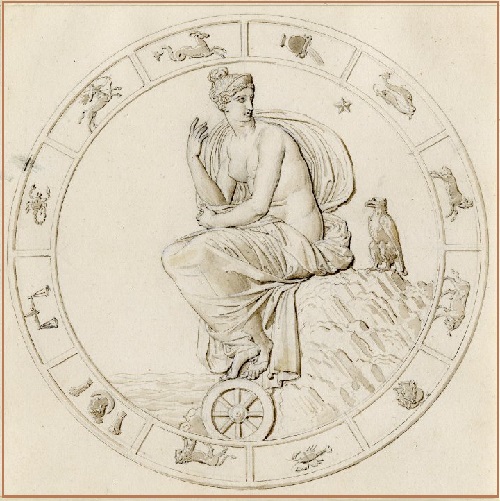
Louis Lafitte 1812-1813. Napoleon on Elba, design for a medal from Napoleon’s ‘Histoire Metallique’, 1809-13
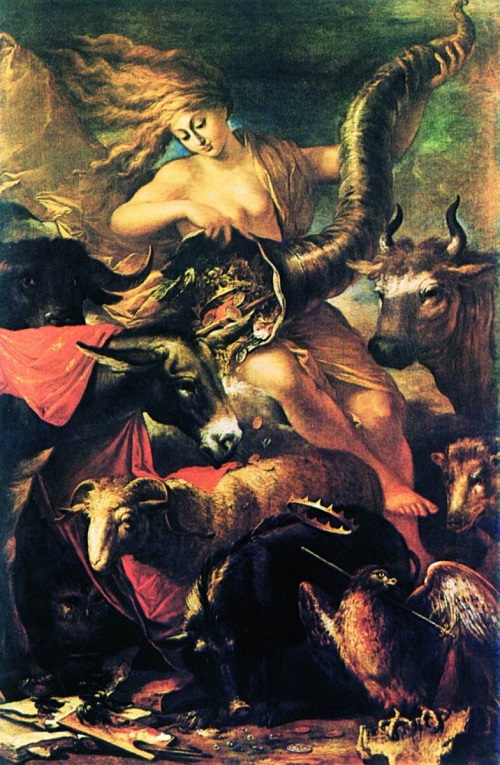
Salvator Rosa, Fortuna, Mythological painting, oil on canvas, Around 1658-1659, The Getty Center, Los Angeles
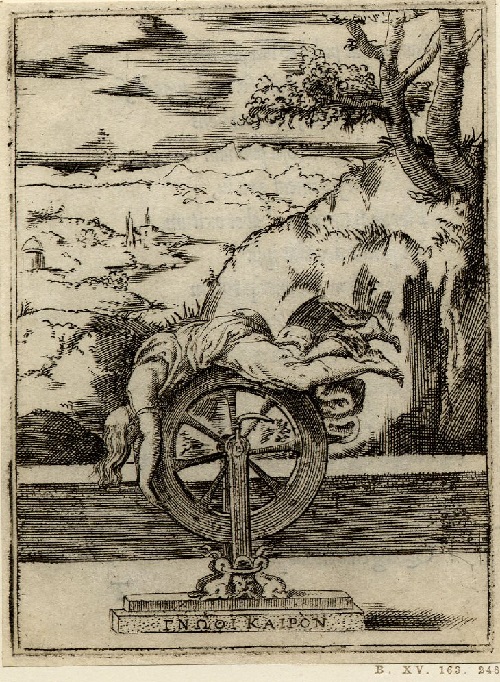
The wheel of fortune with clothed figure lying on it, set before a landscape; from a series of 150 engravings. 1555
marinni.livejournal.com
